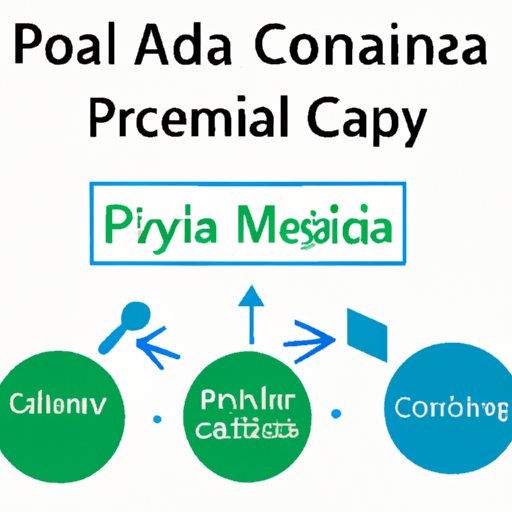
Introduction
As data becomes more abundant, so does the need to analyze it efficiently. Knowing how to draw meaningful data interpretations from large datasets is crucial for business owners, researchers, and anyone working in data-related fields.
One technique used in data analysis is Principal Component Analysis (PCA). In this article, we will provide a comprehensive guide to understanding PCA and how it can be applied in various fields. We will take a closer look at the concept of PCA, how it works, its role in data analysis, its applications, and tips for mastering it.
A Beginner’s Guide to Principal Component Analysis: Uncovering the Basics
Principal Component Analysis is a statistical method that helps simplify complex datasets by reducing the number of variables while retaining the most significant characteristics. In other words, PCA transforms multidimensional data into a lower-dimensional space to make it easier to analyze.
PCA has three main components, namely Eigenvalues, Eigenvectors, and Principal Components. Eigenvalues represent the variance of the dataset, while Eigenvectors are the direction vectors in which data points change. Principal Components, on the other hand, represent each dataset’s best combination of Eigenvectors and Eigenvalues.
The PCA process involves several steps, starting with scaling the data to make sure that each variable has equal weight. The next step is computing the covariance matrix, followed by Eigenvalue decomposition, and finally projecting the data onto a new space. The result is a set of Principal Components that explain the most variation in the data.
Demystifying Principal Component Analysis: How it Works and Why it’s Important
PCA is important in data analysis for several reasons. Firstly, it helps to remove redundant variables in a dataset, thus reducing noise and minimizing the chances of overfitting. Secondly, PCA facilitates visualization of the data, which can be helpful in identifying patterns or trends in data.
PCA is widely used in various real-life situations, including genetics, finance, image processing, and natural language processing. For instance, in genetics, PCA helps to identify population substructure and infer relationships between individuals based on genetic data.
Unlocking the Power of Data Analysis: The Role of Principal Component Analysis
PCA plays a crucial role in data analysis because of its benefits. Data analysis often involves analyzing a vast volume of variables, with many of them being highly correlated. PCA helps to reduce this complexity, saves time, and allows for more manageable analysis.
PCA is especially useful in predictive modeling, where it can help to remove multicollinearity, thus reducing model complexity and improving model accuracy. By reducing the complexity of the dataset, PCA allows for efficient data preprocessing and feature selection.
Principal Component Analysis Explained: Simplifying Complex Data Structures
PCA is particularly beneficial in simplifying complex data structures. Large datasets often have many variables, which can be difficult to analyze, and they may contain data that is not relevant to the analysis.
PCA helps to remove such redundant variables and provides a concise representation of the essential characteristics of the dataset. For instance, in image processing, PCA can be used to simplify an image and remove noise, thus preserving the most relevant and significant features of the image.
From Statistician to Data Scientist: Mastering Principal Component Analysis
Mastering PCA requires skills in mathematics, statistics, and programming. A good understanding of linear algebra, multivariate analysis, and statistical programming languages such as R or Python is critical.
To master PCA, you need to understand how to perform data preprocessing, determine the number of Principal Components, and interpret the results. Additionally, you need to have a good intuition of how variables relate to each other and their impact on the dataset.
Leveraging Principal Component Analysis for Predictive Modeling and Beyond
PCA has numerous applications beyond predictive modeling. In natural language processing, PCA can be used to reduce the dimensionality of text data, making it easier to analyze large volumes of text. In finance, PCA can be used to reduce the complexity of portfolio optimization and risk management.
The advantages of using PCA include robustness to outliers, reduction of dimensionality, and increased efficiency in data processing. PCA can also be used in unsupervised learning to identify clusters and patterns in data.
Principal Component Analysis: A Comprehensive Guide to Finding Meaning in Your Data
In summary, PCA is a powerful statistical method that helps simplify complex datasets by reducing the number of variables while retaining the most significant information. Its benefits in data analysis include reducing noise, improving visualization, improving accuracy in predictive modeling, and simplifying complex data structures.
To master PCA, you need strong skills in mathematics, statistics, and programming, coupled with a good intuition of how variables relate to each other. The applications of PCA are widespread, ranging from genetics to finance, image processing, and natural language processing.
PCA is a valuable tool for anyone working in data-related fields, and understanding it is critical to finding meaning in data.
Conclusion
In conclusion, PCA is an essential statistical tool for anyone working in data analysis. With its ability to simplify complex datasets, PCA helps to save time, improve accuracy, and facilitate data visualization.
While mastering PCA may require a particular set of skills, its applications are vast and cover several fields, including genetics, finance, and image processing. By simplifying data structures, PCA allows for more efficient data processing and analysis and creates a more straightforward path to meaningful insights.





